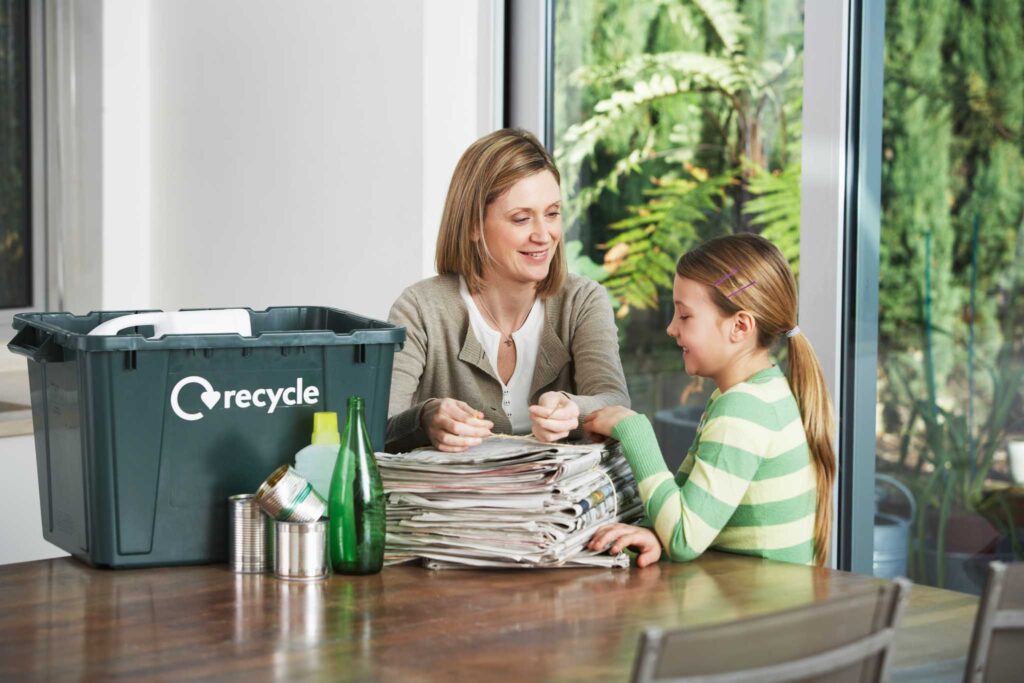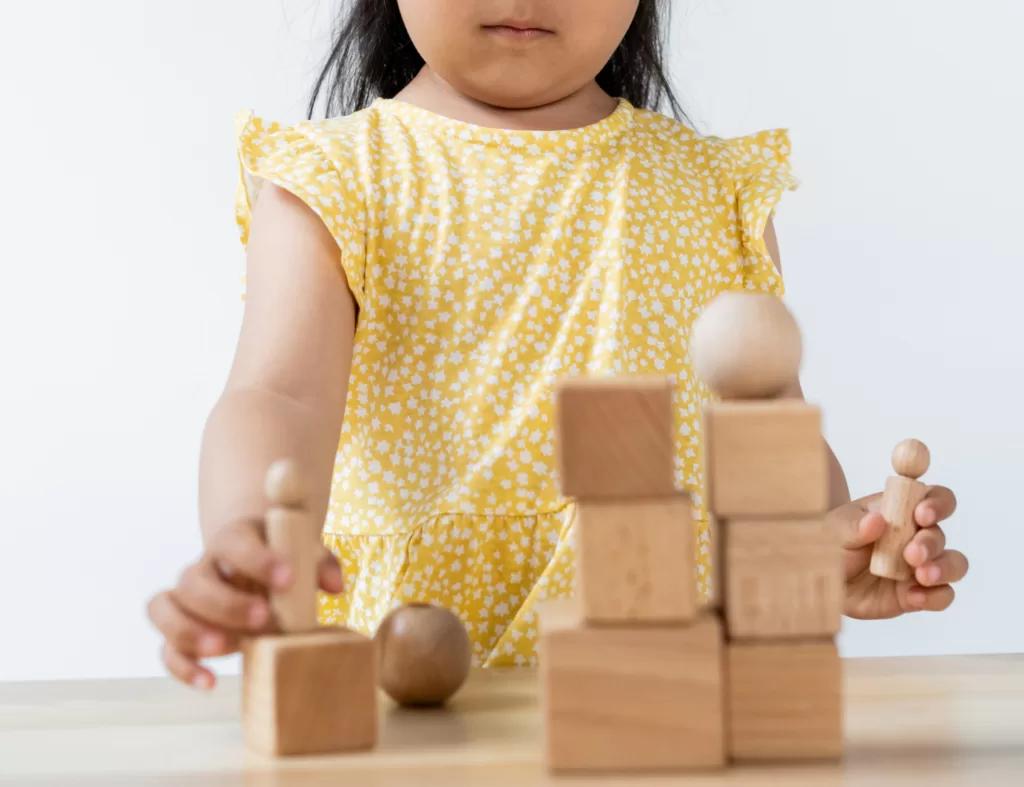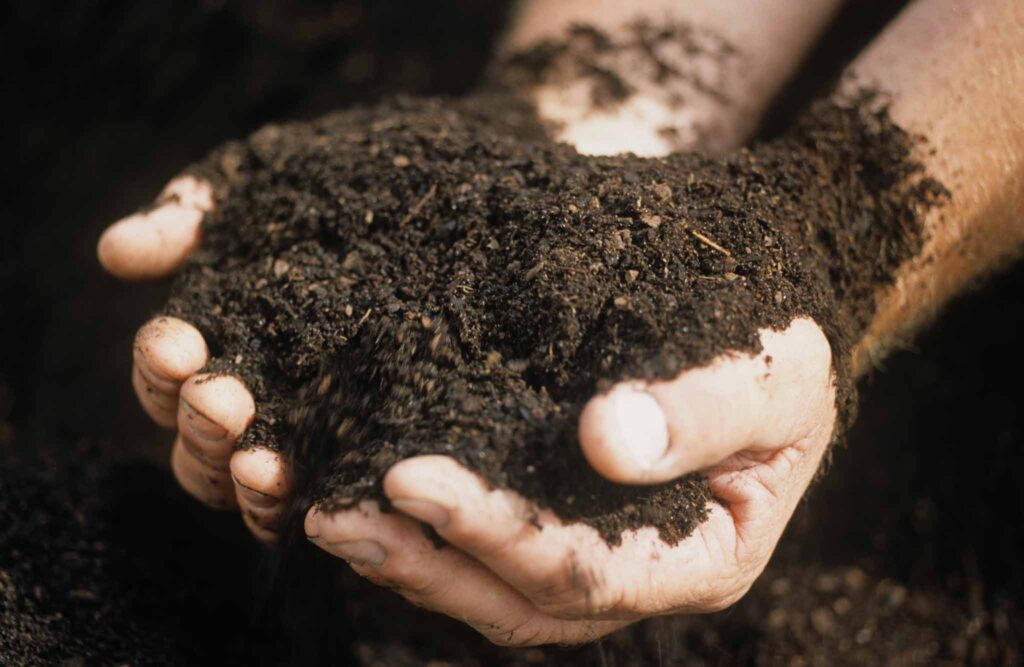Easy Activities to Teach Kids About Sustainability
Estimated reading time: 13 minutes
Sustainable development means obtaining and using natural resources wisely and ethically without compromising the needs of future generations. Therefore, teaching kids about this topic from an early age should be priority number one. Environmental education should alway begins at home, even before children enter the classroom. In this article, you will find numerous ideas and activities to teach kids about sustainability.
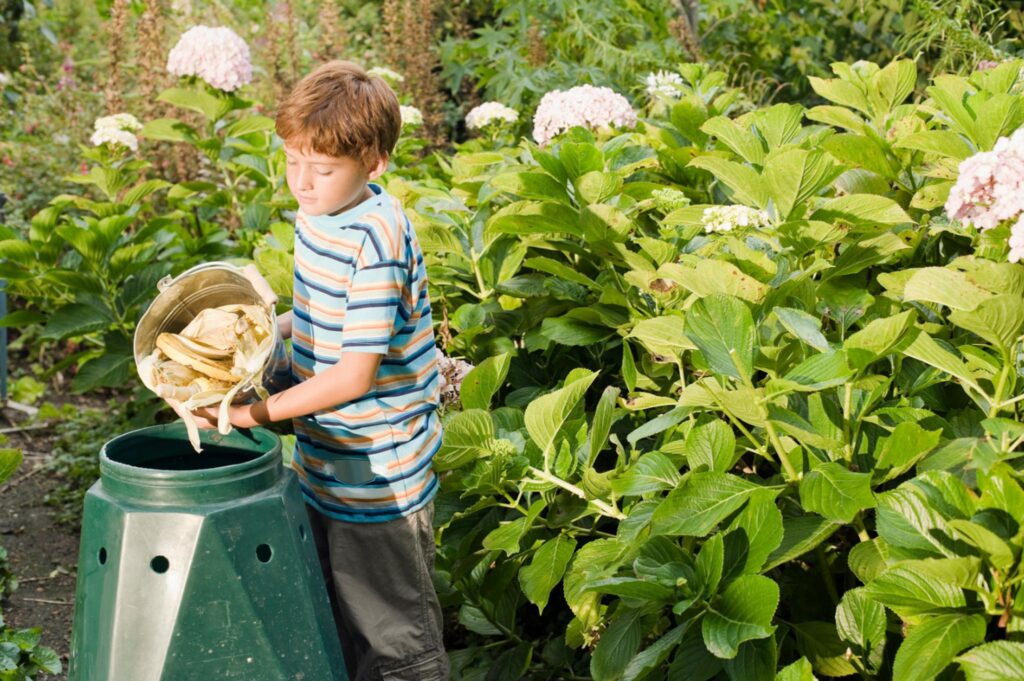
Jump ahead to any section
Learn About Nature and Ecosystems
Encourage Local and Second-Hand
Teach About Social Responsibility and Sustainability
Make the Holidays About Something Other Than Gifts
Share Your Passions and Show Praise
Resources for Teaching and Learning
Try putting the term sustainability into kid-friendly terms. Explain the importance for the current people on Earth not to use up all the food, water, materials, and other things we need. This way, future generations, like their own kids and grandkids, won’t have to do without. You could mention that we need to ensure everyone has all the same opportunities, like access to education and health care now and in the future.
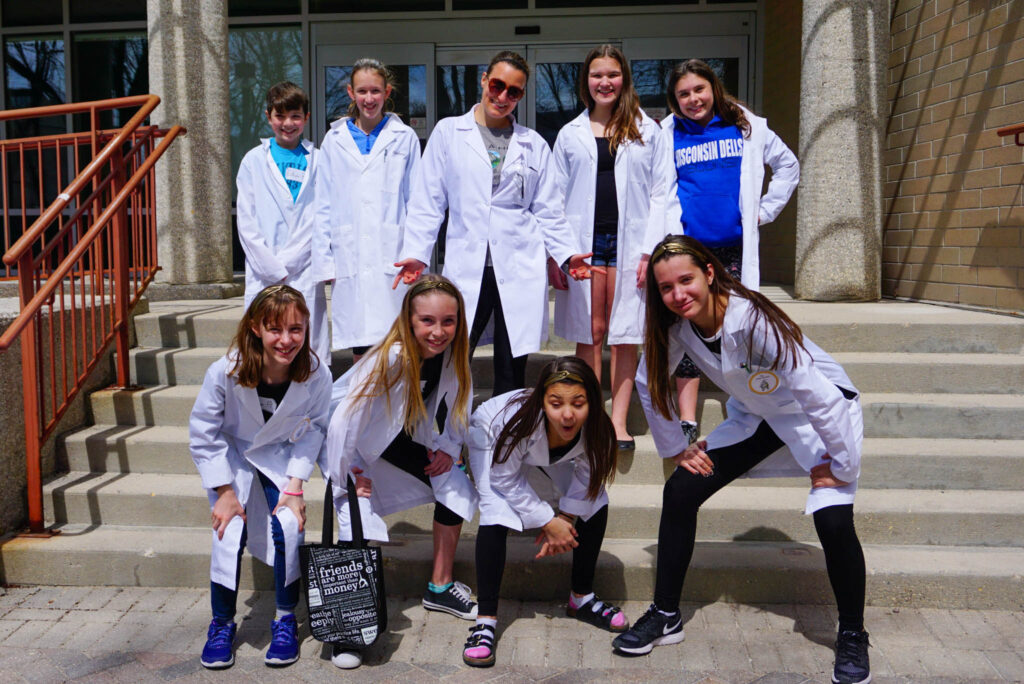
Perhaps you have a precocious child who likes to question. If you need a refresher, or want to amp up your own knowledge, you can read our article “Ultimate Guide: Understanding Sustainability.”
We can impart our passion for sustainability to our young kids in many ways. I’ve included links at the end and throughout this article to great resources for learning about sustainability.
1) Learn About Nature and Ecosystems
Most children love animals. Animals require stable ecosystems in which to thrive. So, by default, kids care about healthy ecosystems.
You can do some excellent earth-friendly learning activities and games with your kids at National Geographic Kids to teach them how all living things are connected and rely on each other.
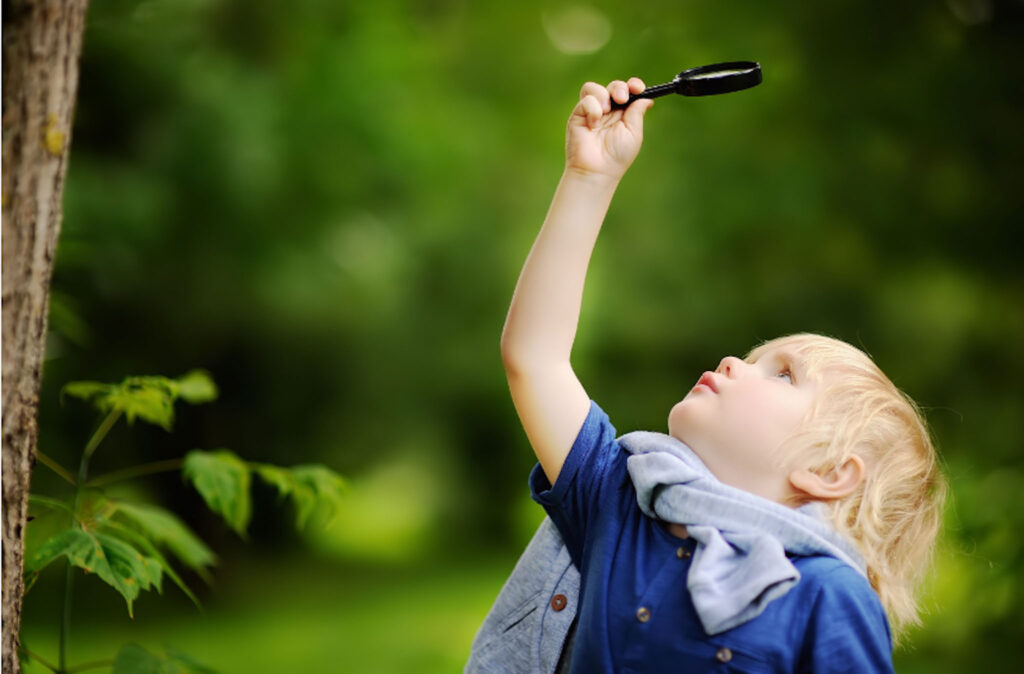
Older kids that like a challenge might be interested in a kid friendly sustainability project I did with my students in Science class every year. It was a water use tracking activity that helped inspire them to conserve water in their daily lives.
Experiments are fantastic eco-friendly activities for children to teach about ecological awareness. A lot of kids learn best with hands-on activities. I’ve included some resources in the last section of this article, but a quick online search will generate tons of great ideas too.
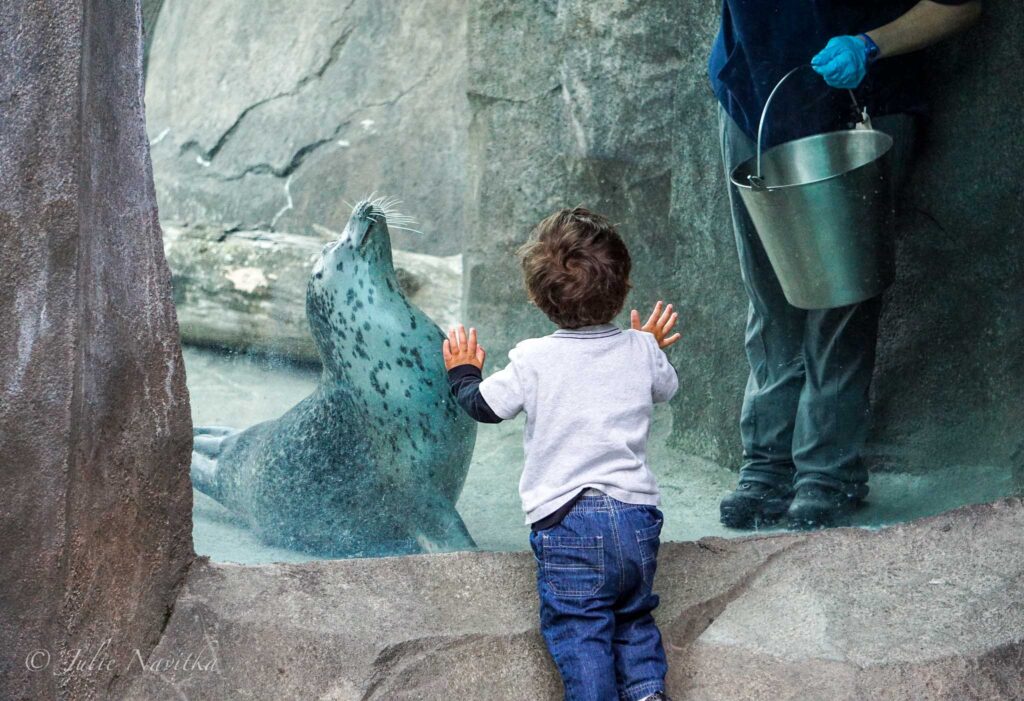
Of course, the best way to learn about nature and ecology is to get outside…..
2) Spend Time Outdoors
It shouldn’t be surprising that kids that love the outdoors will be more likely to treat the environment kindly. Eco-minded play and learning outside will foster a love for nature, which leads to sustainable exploration.
If you have a yard or even a balcony, plant a veggie garden with them and teach them to care for it. Read books or watch short videos together to learn about how it grows. Start a compost bin to create rich fertilizer for your garden. Watch the video Composting for Kids to learn all about the mini-ecosystem within!
Enjoy exploring with your little ones in daily life. Take them hiking or camping, where you might be lucky enough to spot some wildlife. Foraging for berries was a favorite activity of mine as a child at our family cottage. Learn how to recreate sustainably in our “Ultimate Guide: Sustainable Recreation.”
Make it a goal to commute to work and school sustainably as often as you can, which will also increase your time outside and endorphins from activity!
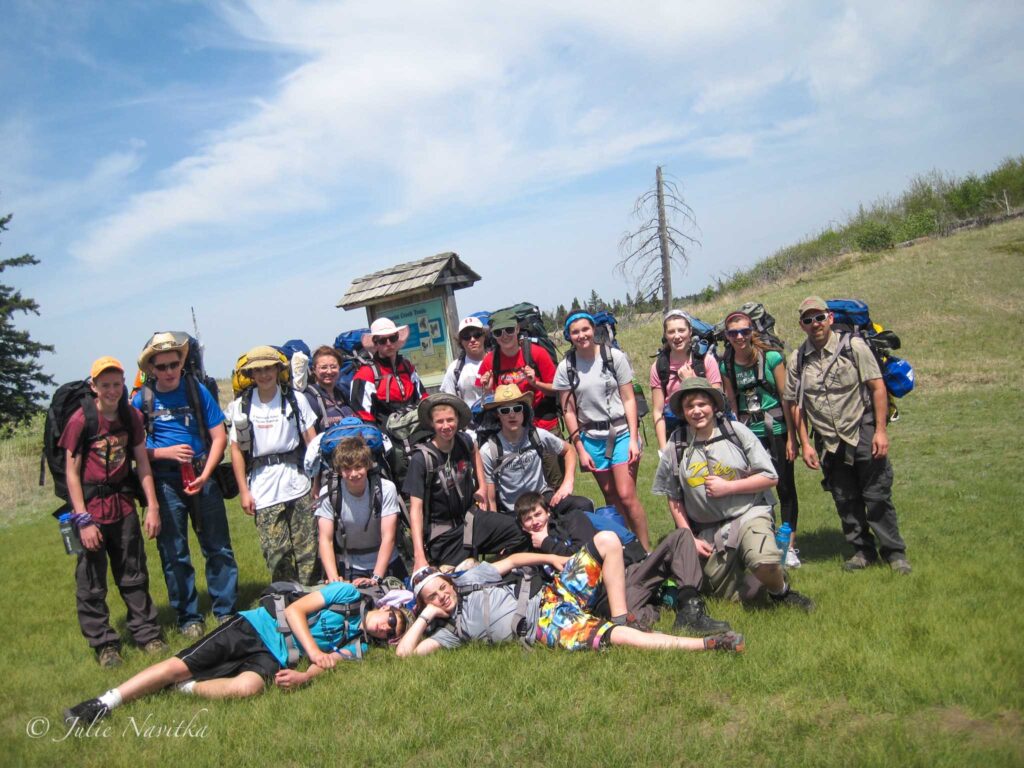
3) Encourage Local and Second-Hand
Take your kids to local markets, shops, and restaurants that promote sustainability. Explain to them why shopping here helps the economy and saves emissions from transportation. Buy them a little treat, and they’ll be glad they came! My friend’s kids love going to the u-pick berry farms plentiful in the prairies in Canada.
When purchasing those back-to-school clothes, do some research together about local clothing companies. Use this opportunity to discuss locally, sustainably, and ethically sourced materials. You could even talk about the hidden water use required to manufacture clothing items.
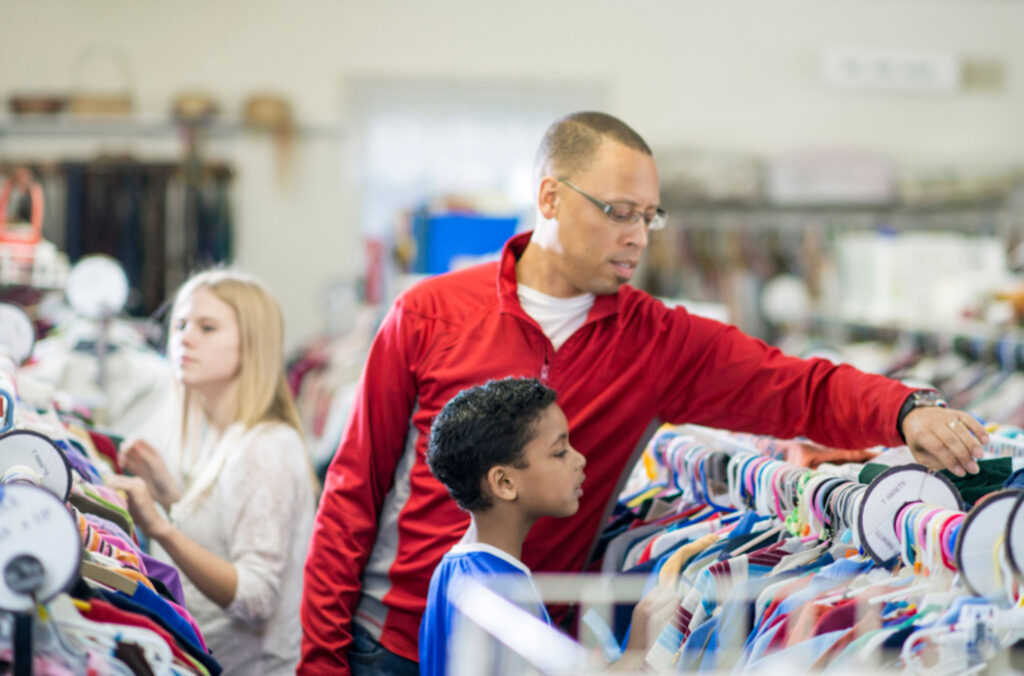
Explain that when we buy second-hand, we eliminate the energy required in the entire manufacturing and transportation process from occurring again as if we purchased new. If you have any old clothes that can’t be used any longer, drop them off at a donation center on your way.
If your kids see you shopping second-hand and supporting local, they are more likely to do the same!
4) Kids Are Not Too Young For This
Many parents and teachers believe they should protect their children from the harsh realities of our world. Although some topics are too heavy for the littlest kids, our children must know others in this world do not have the opportunities and amenities we do.
Teaching kids that they need to be a part of the fight for ethical practices worldwide shouldn’t be something we shy away from. I believe that teaching our children about Human Rights and issues worldwide is crucial if we want to raise an empathetic, involved, and educated youth.
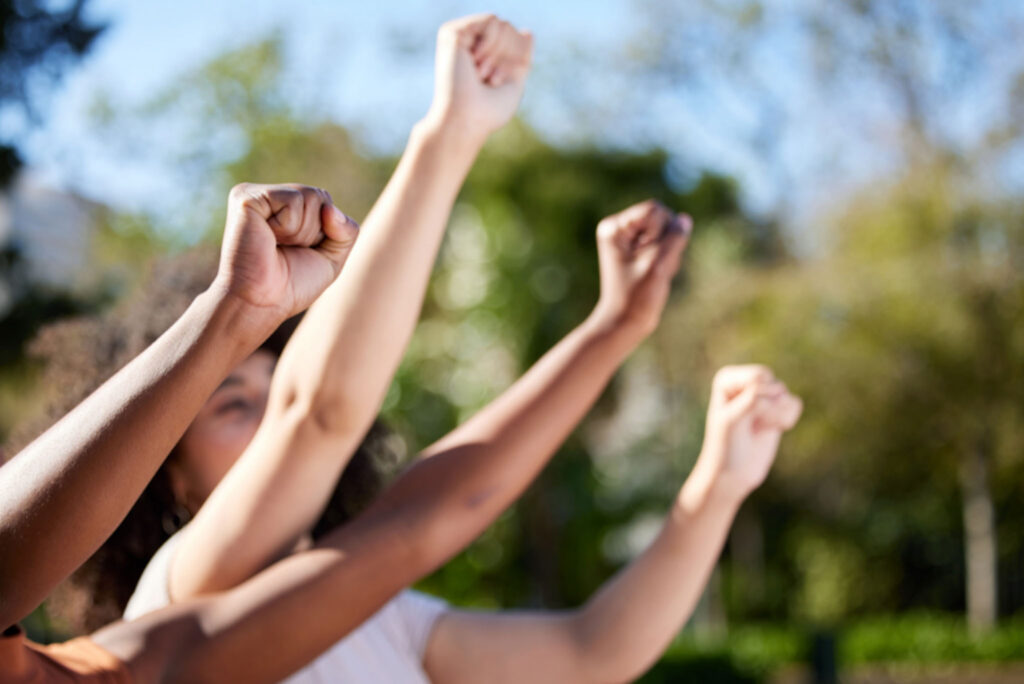
Regarding social sustainability, issues such as ethical manufacturing, a right to education and clean water, and access to health care are good places to start. Kids understand more than we give them credit for!
Check out the video about Human Rights in the Resources section near the end of this article.
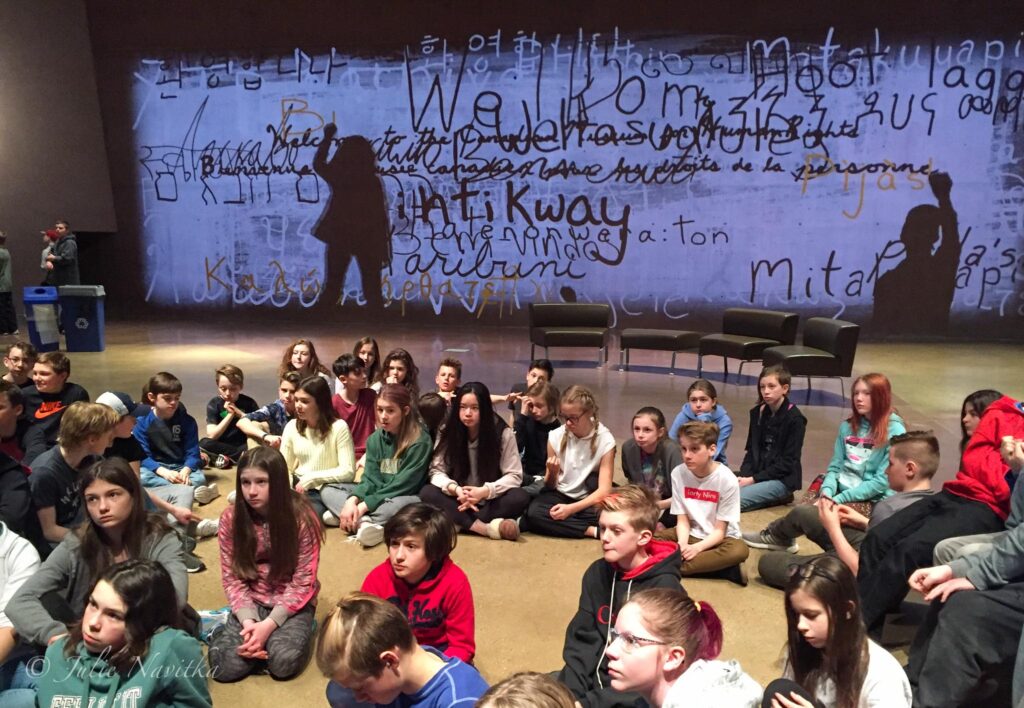
5) DIY or Up-Cycle SomethinG
Most little ones love crafts. I still love crafts, and I’m forty years old! There are so many cool earth-friendly crafts and activities for kids that you can do while teaching kids about sustainability.
Up-cycling old items into something new is one of the best ways to do this. Rather than throwing out that scrap paper or thing that broke the other day, look on-line for some craft inspiration to see what you could make from it instead.
Teach your kids while you craft that repurposing things will reduce waste in the landfill. Landfills produce emissions and run-off that harm the planet.
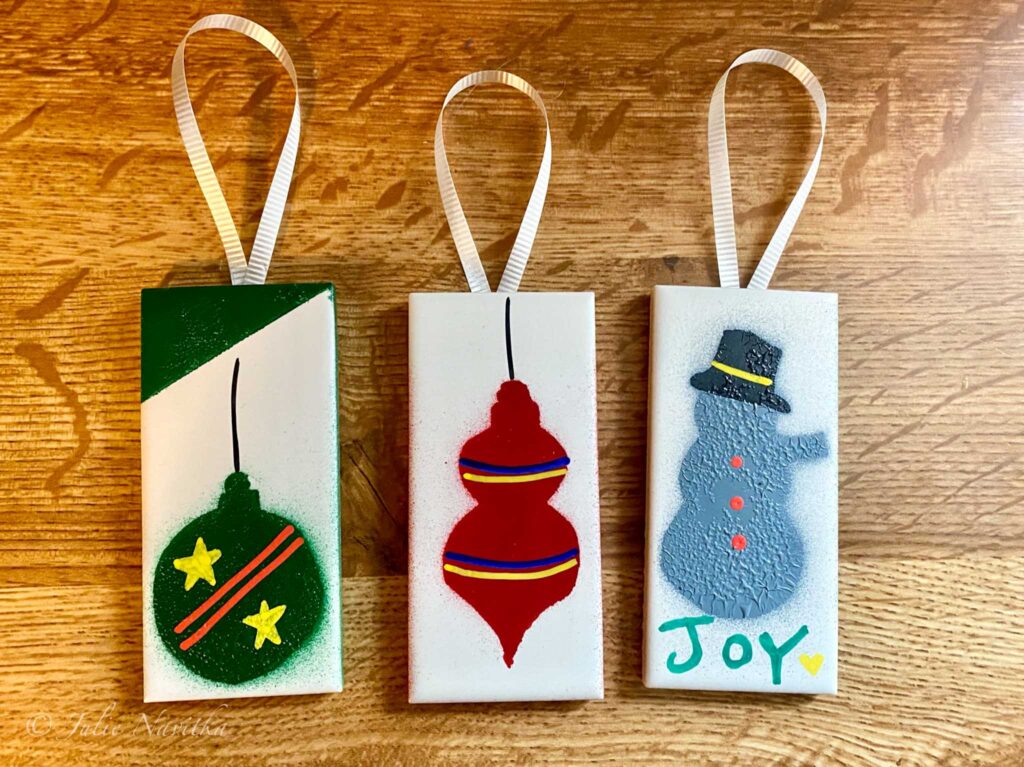
Up-cycling and crafting using recycled materials is a great way to create unique, thoughtful, and sustainable gifts too! And speaking of gifts…..
6) Make the Holidays About Something Other Than Gifts
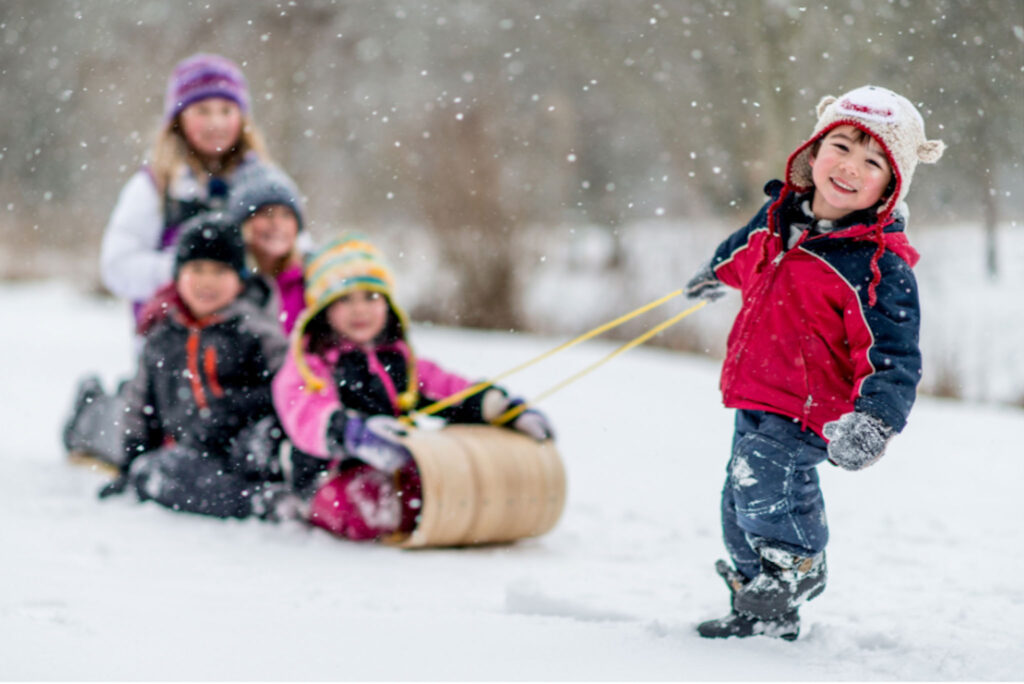
I remember being very excited on Christmas morning; my eyes filled with glee when I spotted the gifts under the tree. Now, every year I beg my family not to buy me material things.
I think the best gifts are thoughtful and meaningful, which has nothing to do with the attached price tag or label. Many types of gifts are more sustainable than purchasing new items. Buy tickets to the ballet or carnival for the whole family. Bake someone their favorite dessert. Everyone has a skill – offer your services for free.
These gifts show that you thought about the recipient’s interests. I would argue that’s the most heartfelt gift you can receive.
We all know how tough it is to say no to anyone, especially our kids. I’m not suggesting you don’t give your children gifts. But, if we teach children what else might be important on those holidays, we might also impart that onto them. Encouraging a minimalist mindset in our kids is essential for a sustainable lifestyle.
Although I was delighted about those presents, I was equally excited to have a great big family gathering.

7) Incorporate Routine Tasks
You can have your kids incorporate many chores and tasks into their everyday lives to help them lead a sustainable lifestyle. Giving kids duties and expectations shouldn’t be a thing of the past.
Have your kids be responsible for sorting the recycling bin or taking leftover kitchen scraps to the compost. Get them to water plants, or teach them to reduce waste by doing a food inventory in the house. Engaging kids in eco-friendly practices gives them hands on eco-education – which is the best kind!
Make sure you take the opportunity for a teachable moment when your kids ask why they should do things around the house. For example, explain that tidying up and taking care of your things means they will last longer and need less washing or repairs.
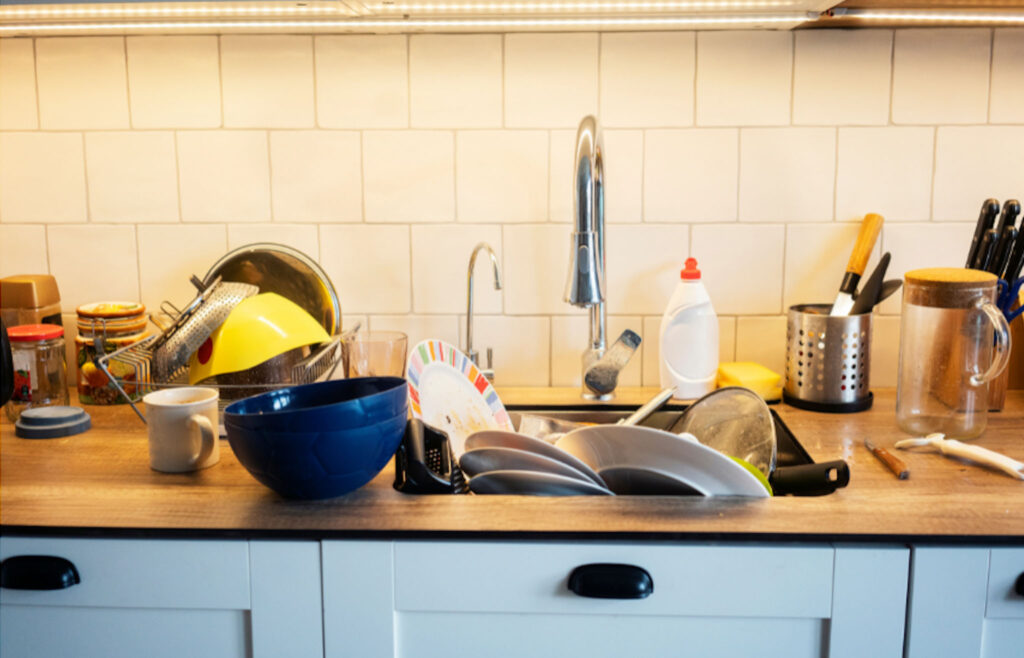
The biggest, and perhaps most challenging, lesson to teach is that less can be more. Modeling will be your secret weapon here – you must practice what you preach. If you want to convince your kids that they don’t need the most recent everything, you’ll have to be prepared to do without yourself! There are many small things you can do to create a more sustainable home for your family.
8) Share Your Passions and Show Praise
It can’t be said enough that we need to lead by example. You’ll never convince your kids to incorporate practices into their own lives that you don’t carry out yourselves. If you’re passionate about a particular issue like water pollution, share this with your kids!
Furious about fast fashion? Take some thrifting adventures together. Disgruntled about deforestation? Sign up to take part in a tree planting in your community. Climate change got you fuming? Talk to your kids about air pollution and its environmental impact.

And, of course, don’t forget to be proud of your children. Recognize when your kids are making sustainable choices, and praise them when doing so. Let them know their actions have not only benefitted them but have had a positive impact on the whole community.
Take pride in your parenting if your kids think about their actions and beyond themselves when making decisions. And thank yourself later because those kids will be less of a handful as teenagers!

In Conclusion
When it comes to your journey to sustainability, passing this passion and knowledge and a green lifestyle education on to your children is likely the most significant impact you can make. Start teaching your kids about these topics early, and they’re more likely to have an intrinsic motivation to be sustainable themselves.
If it all seems just a little bit overwhelming, remember that every journey starts with just one small step!
Resources for Teaching and Learning
Please note that you should preview resources to determine if they are suitable for your child(ren).
- Sustainable Classroom Ideas: Tips for a Green Classroom – for teachers
- The 10+ Rs of Sustainability – teach your kids to consider these before replacing, or even recycling, an item!
- Sustainability for Kids animated video 4:25 minutes
- What Does it Mean to be Green? Video Storybook – great for little kids!
- A vast wealth of Multiple Choice quizzes on everything from Sustainable Fashion to Biodiversity
- Visit National Geographic Kids to obtain some fantastic resources for Kids Vs. Plastic
- Find many excellent resources at the EPA’s WaterSense for Kids website, including a fun pac-man style game to learn about water conservation.
- Make a Water Filter as a rainy-day indoor activity to learn that creating clean, drinkable water requires time, energy, and resources.
- Make Paper Beads from old magazines or newspapers as a fun up-cycling activity. Give the jewelry you make with them as gifts rather than buying new!
- Video: The Story of Bottled Water – a fantastic 8-minute animated video describing a bottle of water’s manufacturing process and life-cycle.
- Learn about some endangered species and how you can help.
- Check out the cute video on this page to spark a conversation about Human Rights and Social Sustainability with your kids.
- Water Conservation Project and Water Conservation Project Simplified (below) – track your water use in detail and vow to make some water conservation changes!

